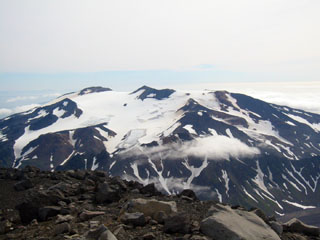Report on Takawangha (United States) — 15 March-21 March 2023
Smithsonian Institution / US Geological Survey
Weekly Volcanic Activity Report, 15 March-21 March 2023
Managing Editor: Sally Sennert.
Please cite this report as:
Global Volcanism Program, 2023. Report on Takawangha (United States) (Sennert, S, ed.). Weekly Volcanic Activity Report, 15 March-21 March 2023. Smithsonian Institution and US Geological Survey.
Takawangha
United States
51.873°N, 178.006°W; summit elev. 1449 m
All times are local (unless otherwise noted)
AVO reported that earthquake activity near Takawangha had decreased in both rate and magnitude from the peak of the swarm recorded during 9-11 March. More than 800 earthquakes, including multiple M2 and above events, were detected beneath Tanaga Island at depths less than 9 km below sea level during 11-17 March. The decline in activity decreased the potential for an eruption, so AVO lowered the Volcano Alert Level to Advisory (the second lowest level on a four-level scale) and the Aviation Color Code to Yellow (the second lowest color on a four-color scale) on 16 March. The Volcano Alert Level and Aviation Color Code for Tanaga (8 km W) were also lowered to the same level. Several M 2 and higher earthquakes were detected during 17-18 March, in addition to numerous smaller events. Earthquake activity persisted through 20 March.
Geological Summary. Takawangha is a youthful volcano with an ice-filled caldera on northern Tanaga Island, near the western end of the Andreanof Islands. It lies across a saddle from historically active Tanaga volcano to the west; older, deeply eroded volcanoes lie adjacent to the east. The summit of the dominantly basaltic to basaltic-andesite volcano is largely ice covered, with the exception of five Holocene craters that during the last few thousand years produced explosive eruptions and lava flows that reached the lower flanks. No historical eruptions are known, although radiocarbon dating indicates explosive eruptions have occurred within the past several hundred years.
Source: US Geological Survey Alaska Volcano Observatory (AVO)

